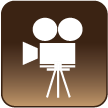Sentence Starters for Text-to-Self Connections
Building Reading Comprehension Strategies
Activity Description
Preparation:
-
Prepare the Schema chart
- Write the heading “Schema” at the top of a piece of chart paper
- Below the heading write “Thinking about what you already know is called using your schema”
-
Provide a list of examples below the definition
- For example: places you have been, things you have done, books you have read
-
Prepare the Making Connections chart
- Write the heading “Making Connections” at the top of another piece of chart paper
-
Below the heading write the following 3 sentence starters
- The part when...
- Reminds me of...
- This helps me understand the story better because...
-
Select a fiction text that provides opportunities for students to make text-to-self connections
- For example: Alexander and the Terrible, Horrible, No Good, Very Bad Day, by Judith Viorst
Implementation:
-
Introduce the activity by telling students that they will be learning about making connections
- Emphasize making connections is a strategy that they can use to help them become better readers and understand what they are reading
-
Explain the meaning of “schema”
- A “schema” is the background knowledge you already have about a topic from your personal experiences
- Have students think about an experience they have had and relate it to a text they are reading
-
Refer to the Making Connections chart
-
Discuss how making connections is an important comprehension strategy to use as a reader
- Explain that making text-to-self connections means thinking about how the text reminds you of a personal experience
- Read the 3 sentence starters aloud and explain how they can help make connections to a text that they are reading
-
Discuss how making connections is an important comprehension strategy to use as a reader
- Read aloud a fiction text
-
After you have read the story aloud, refer back to the Making Connections chart
- Model making a text-to-self connection by orally completing each sentence starter
- Invite students to share their own connections orally using the sentence starters from the Making Connections chart
- Have students practice making connections using the sentence starters while they read
Adaptations For
English Language Learners/ESL:
- Prior to whole class discussion provide thinking stems to students and allow time to practice speaking aloud
- Pre-teach the terms schema and making connections and provide synonyms of each word to students while they practice the strategy
LD/Reading & Writing Difficulties:
- Provide visual cues or symbols for each sentence starter
- Provide student with an individual reference chart that reflects the Making Connections chart
Cultural Appropriateness & Diversity:
- Select a text that is culturally inclusive
- Select a text that includes information with which students will be familiar and make personal connections
Differentiated Instruction:
- Provide 2-3 options for each sentence starter
- Encourage varied connections during whole class discussion
Related References
Source: Harvey, S. & Goudvis, A. (2007). Strategies that Work: Teaching Comprehension for Understanding and Engagement. Portland, ME: Stenhouse Publishers.
Evidence: Hirsch, E. D. (2003). Reading comprehension requires knowledge-Of words and the world. American Educator, 10-44.
Activity Objective
The goal of Sentence Starters for Text-to-Self Connections: Building Reading Comprehension Strategies is to improve students' comprehension skills by explicitly modeling making connections and providing them with practice using this strategy.
What You Need
Prep Time:
20 minutes - Prepare Schema chart
- Prepare Making Connections chart
- Select fiction text
Task Time:
30-40 minutes - Teacher explains Schema chart
- Teacher explains Making Connections chart
- Teacher reads aloud fiction text
- Teacher models making a text-to-self connection
- Students share text-to-self connections
- Students practice making connections while they read
Materials Required:
Teacher:
- Chart paper
- Markers
- Fiction text
What You Do
Teacher Role:
Direct instruction:
- while explaining charts
Modeling:
- while modeling making a connection
Consultant:
- while students practice making connections
Student Grouping:
Whole class:
- during presentation of charts, read aloud and modeling of making a connection
Individual:
- when students practice making connections
Assessment Ideas:
- Record anecdotal notes during reading conferences by asking the students to make a connection to the text they are reading
- Use a rubric to track students' ability to refer to the text, make a personal connection and tell how using this strategy makes them a better reader orally or in writing
Quick Tips
Activity Extensions:
- Re-read the story on another day and have students make text-to-self connections as you go along
- Select a new fiction text to read aloud and have students record their connections using the sentence starters
- Provide multiple opportunities for students to practice making connections by reading a variety of fiction and non-fiction texts
- Have students view posters of various artists or wordless picture books and make connections to them
Additional Comments:
- Provide students with a number of opportunities to practice making connections using the sentence starters so they will eventually be able to automatically use this strategy while they read. Emphasize making connections as extending their understanding of the text.
- Use a variety of texts, including pictures and posters, as well as texts from different subject areas including science and social studies.
- The charts should become "anchor charts" and should be posted on a wall so that students are able to refer to them on an ongoing basis.
Other Adaptations/Modifications:
- Strategically seat students who may require cues to refocus













